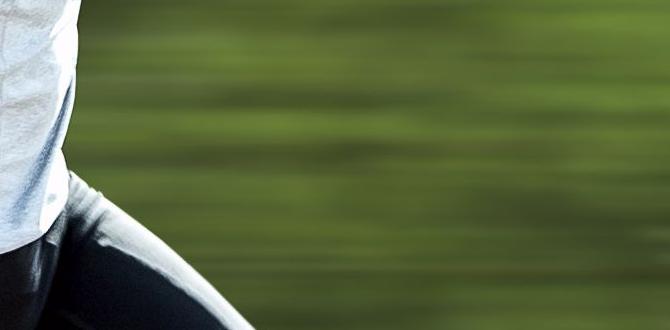Have you ever wondered how to run wires for outdoor security cameras? It may seem tricky, but it’s not as hard as you think. Picture this: you want to keep your home safe, and cameras are a great way to do that. But then you see all those wires. What do you do?
Running wires the right way can make a big difference. Not only will it keep your cameras functioning, but it will also look neat. Imagine stepping outside and seeing a tidy setup instead of a tangled mess. Wouldn’t that be nice?
Plus, did you know that an organized wire system can extend the life of your security cameras? It’s true! Taking the time to set things up properly will save you time and money in the long run.
In this article, we will guide you through the best ways to run wires for outdoor security cameras. Let’s ensure your home stays safe while looking great!
How To Run Wires For Outdoor Security Cameras Safely

How to Run Wires for Outdoor Security Cameras
Running wires for outdoor security cameras might sound tricky, but it’s easier than you think! First, plan the camera locations for the best coverage. Use outdoor-rated cables to resist weather. Make sure to drill small holes in walls for a clean look. Secure wires along walls or in conduits to keep them protected. Did you know that hiding wires can also prevent tampering? Following these tips will help you set up a secure area, giving you peace of mind.Choosing the Right Wire for Outdoor Security Cameras
Types of cables: coaxial, Ethernet, and power cables. Factors to consider: distance, weather resistance, and flexibility.When it comes to running wires for outdoor security cameras, choosing the right cable is key. You can pick from coaxial, Ethernet, or power cables. Each has its strengths. Coaxial cables are great for video quality but can be stiff. On the other hand, Ethernet cables are flexible for long distances but need protection from weather. Lastly, power cables keep your cameras charged but might need extra care against the elements.
| Type of Cable | Best For | Considerations |
|---|---|---|
| Coaxial | High-quality video | Stiff and durable |
| Ethernet | Networking | Flexible, but needs weather resistance |
| Power | Charging cameras | Must be durable against weather |
Think about distance, weather, and flexibility before you decide. If your wire is too short or breaks in bad weather, your cameras won’t catch any sneaky raccoons stealing your garden gnomes!
Planning the Installation Path
Assessing the layout of your property. Identifying the point of entry and camera placement.Before you set out on your wire-running adventure, take a moment to survey your yard. Think of it like a treasure map! Start by figuring out where you want your cameras. Look for areas that need good eyes, like entry points and dark corners. Next, map the best routes for the wires. Avoid places where mowers roam—yikes on the wire-cutting! A smart plan makes your installation fast and easy, leaving you more time to catch that sneaky raccoon on camera!
| Step | Action |
|---|---|
| 1 | Assess your property layout |
| 2 | Identify camera placement |
| 3 | Choose wire routes carefully |
Safety Precautions Before Installation
Importance of power shutdown and equipment checks. Ensuring compliance with local building codes and regulations.Before starting the installation, ensure safety is your priority. Always turn off the power to avoid electrical shocks. Check your tools and equipment to confirm everything works well. It’s also crucial to follow local building codes. These codes help keep homes safe. Ignoring them can lead to fines or unsafe setups. Always be prepared and follow the rules!
What should you check before installing outdoor cameras?
Make sure to check the power supply and your equipment. It’s also important to understand local codes to avoid problems.
Step-by-Step Guide to Running the Wires
Preparing the site: clearing and measuring. Techniques for burying wires and using conduits.Clear the area where you plan to run your wires. Remove small rocks, plants, and debris. Then, measure the distance from the camera to the power source. This step ensures you have enough wire.
Burying wires helps protect them. Use a shovel to dig a trench about 6-12 inches deep. Conduits can also guard your wires against weather and damage. Place the conduit in the trench and secure it in place.
Finally, lay the wires inside the conduit or directly in the trench. Fill the trench with dirt afterward. This keeps everything safe and neat.
How deep should I bury camera wires?
Camera wires should be buried at least 6-12 inches deep.Techniques for Wire Installation:
- Clear the site before starting.
- Measure the distance to ensure enough wire.
- Dig a trench 6-12 inches deep.
- Use conduits to protect wires.
- Fill the trench after laying down the wires.
Testing and Securing the Installation
Methods for testing the camera and wire connections. Best practices for securing wires and protecting against damage.After installing outdoor security cameras, it’s time to make sure everything works well. First, check the camera feed to see if you can spot your top-secret squirrel friends! Make sure the wires are connected tightly. If they’re loose, it’s like a bad hair day for your camera. Next, hide those wires! Not only do they look messy, but animals might think they’re play toys. A good tip is to use cable clips or conduits—think of them as cozy little homes for your wires. For extra protection, use weatherproof materials. After all, nobody likes a soggy wire!
| Testing Method | Best Practices for Securing Wires |
|---|---|
| Check camera feed | Use cable clips |
| Inspect wire connections | Cover with conduits |
| Use a multimeter | Weatherproof materials |
Maintenance Tips for Outdoor Security Camera Wiring
Regular checks and cleaning recommendations. Signs of wear and when to replace wiring components.To keep your outdoor security camera wiring in top shape, regular checks are key. Look for cracks or fraying on the wires that could turn your camera into a fancy paperweight. Clean debris off wiring with a soft cloth to avoid buildup. If you notice any signs of wear, like exposed wire, it’s time to replace those components. Pro tip: If wires look like spaghetti on a bad hair day, they need help!
| Maintenance Tips | Signs for Replacement |
|---|---|
| Check regularly | Fraying wires |
| Clean with soft cloth | Exposed wiring |
Conclusion
To run wires for outdoor security cameras, first plan your layout carefully. Use weatherproof cables for durability. Dig trenches to protect the wires, and secure them properly. Make sure to test your connections before finishing. Now that you know how to do this, you can set up your cameras confidently. For more tips, keep reading or consult guides online!FAQs
What Tools And Materials Do I Need To Run Wires For Outdoor Security Cameras?To run wires for outdoor security cameras, you need a few tools and materials. First, get some safety gloves to protect your hands. You will need a wire cutter to cut the wires to the right lengths. A drill will help you make holes for the wires. Don’t forget to use outdoor-rated cables to keep them safe in bad weather!
How Should I Plan The Route For Wiring To Ensure Optimal Camera Placement And Performance?To plan the route for wiring, first, think about where you want to place the cameras. Choose spots with good views and light. Keep the wires as straight as possible. Make sure you avoid sharp corners or obstacles. Check that the wires are safe and won’t get damaged. This will help the cameras work well!
What Type Of Wire Is Best Suited For Outdoor Security Camera Installations?For outdoor security cameras, you should use a cable called coaxial cable or Ethernet cable. Coaxial cable is good for connecting cameras to a recorder. Ethernet cables work well for sending video over long distances and can also power the camera. Make sure the cable has weather-proof protection. This keeps the wires safe from rain and sun.
How Can I Protect Wires From Weather Damage And Possible Tampering?You can protect wires from bad weather and tampering by using special covers. These covers keep rain, snow, and dirt out. You can also bury wires underground or put them in strong tubes. Use locks or strong ties to stop people from messing with them. Checking your wires regularly helps keep them safe, too!
Are There Any Specific Codes Or Regulations I Need To Follow When Running Wires For Outdoor Security Cameras?Yes, you need to follow some rules when running wires for outdoor security cameras. First, check local building codes. These rules help keep everyone safe. Also, use wires that are made for outdoor use. They can handle rain and dirt better. Don’t forget to ask for help if you’re unsure!






